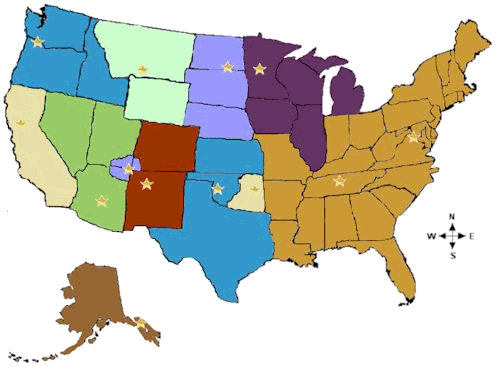The United States has a legal and political relationship with Indian tribes and Alaska Native entities as provided by the Constitution of the United States, treaties, court decisions and Federal statutes. Indian Affairs provides services directly or through contracts, grants, or compacts to 564 Federally recognized tribes. While the role of Indian Affairs has changed significantly in the last three decades in response to a greater emphasis on Indian self-governance and self-determination.
The Bureau of Indian Affairs provides several up to date reports on Indian Tribes, but others are old and possibly out of date. We are presenting both on these pages. The list of Federally Recognized tribes is dated October 2009, while those on the list of Federal Petitions goes back to 2005 (update) many tribes have been on the list longer than that date. In December of 2009 the Shinnecock were added to the list of Federally Recognized Tribes. The Bureau of Indian Affairs has divided the United States into 12 Regions. The colors of the map below are the divisions by state and location.
When viewing the different tribes you will find that some have only a mailing address. We have searched for Tribal Websites but many were not found. If you know of an official Tribe website, please let us know by using our comment form below.

Region Guide
- Alaska Region
- Eastern Region
- Eastern Oklahoma Region
- Great Plains Region
- Midwest Region
- Navajo Region
- Northwest Region
- Pacific Region
- Rocky Mountain Region
- Southern Plains Region
- Southwest Region
- Western Region
See Further:
- How to Register
- Bureau of Indian Affairs
- Petitioners awaiting decisions (Waiting for a new list from BIA)
